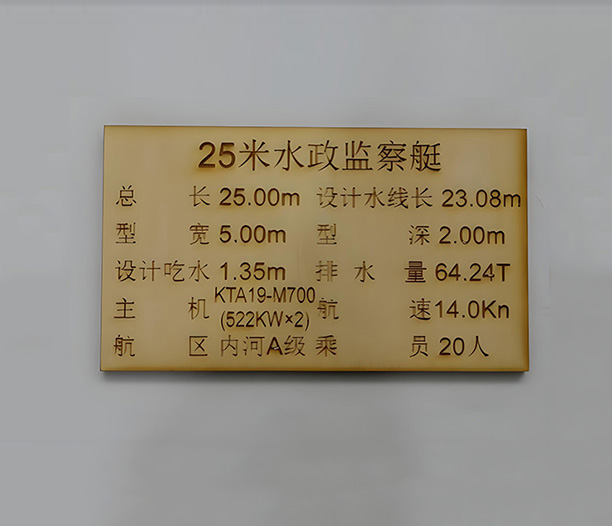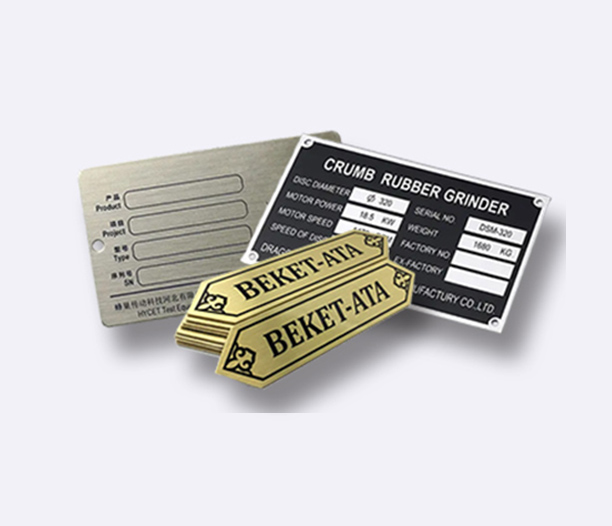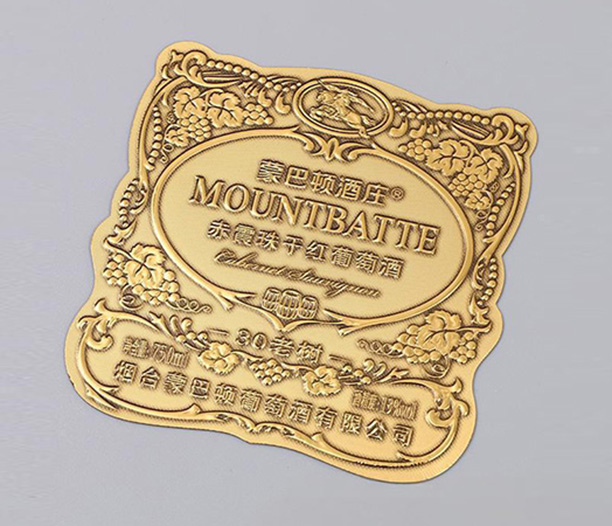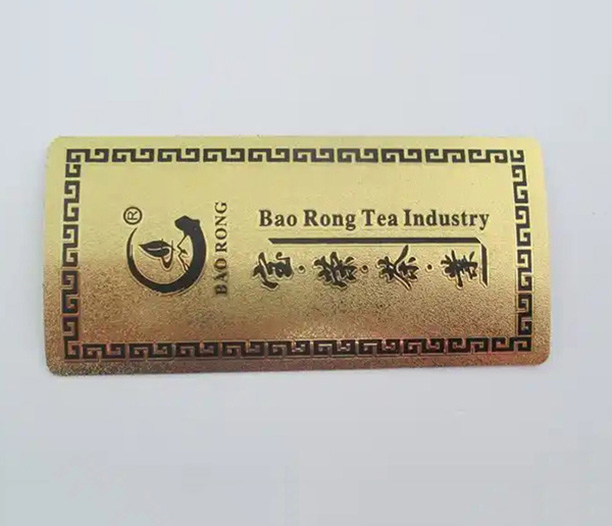In a world increasingly dominated by digital interfaces and fleeting information, the need for durable, professional, and permanent physical identification remains stronger than ever. Adhesive engraved name plates represent a pinnacle of this enduring technology, combining the timeless elegance and durability of engraving with the modern convenience of advanced adhesive systems. These versatile identification solutions are far more than simple labels; they are integral components for branding, safety, organization, and asset management across countless industries.
Whether you're looking to identify office equipment, label machinery on a factory floor, create a sophisticated directory, or ensure compliance with safety regulations, understanding the intricacies of adhesive engraved name plates is crucial. This comprehensive guide will explore the seven essential aspects you need to know, from their manufacturing process and material choices to their diverse applications and the critical factors in selecting the right one for your project.

1. What Exactly Are Adhesive Engraved Name Plates?
At its core, an adhesive engraved name plate is a rigid or semi-rigid plaque, typically made from metal or plastic, that features text, logos, or symbols physically engraved into its surface. This engraved information is then often filled with colored enamel to enhance readability and aesthetic appeal. The defining feature of these name plates is the integration of a high-performance, permanent adhesive backing, protected by a liner until the moment of application.
Unlike printed labels or vinyl decals, the information on an engraved plate is not applied on the surface; it is carved into it. This makes the identification extremely resistant to wear, abrasion, chemicals, and fading from UV light exposure. The combination of this rugged engraving process with a powerful adhesive creates a identification solution that is both incredibly durable and remarkably easy to install, requiring no drills, holes, or specialized tools. Adhesive engraved name plates are the go-to choice when a professional, permanent, and clean-looking identification method is required.
2. The Manufacturing Process: How Adhesive Engraved Name Plates Are Made
The creation of high-quality adhesive engraved name plates is a precise process that blends traditional techniques with computer-controlled technology. Understanding this process highlights why these plates are so valued for their durability and quality.
Design and Digital Layout: The process begins with digital design using specialized software (e.g., CAD or graphic design programs). Every detail, from font size and spacing to logo artwork, is meticulously laid out. This digital file acts as the blueprint for the engraving machine.
Material Selection and Shearing: A sheet of the chosen material (e.g., aluminum, brass, or plastic) is selected and sheared to the overall required size for the production run.
Computer-Controlled Engraving: The material sheet is loaded into a computer-numeric control (CNC) engraving machine or a laser engraver. The machine follows the digital design's paths, using a rotating cutting tool or a laser beam to precisely cut into the material's surface to a specific depth. This step creates the cavities that will form the letters, numbers, and graphics.
Filling (Color Application): If a color contrast is desired, special enamel fill paint is applied over the entire engraved surface, pushing it into the freshly cut grooves. The excess paint on the surface is then meticulously wiped away, leaving paint only within the engravings. This step is what creates the classic, high-contrast look of engraved signs.
Curing and Drying: The painted plates are then cured in an oven or left to air dry, ensuring the paint becomes hard and durable.
Adhesive Application and Finishing: Once the plate face is complete, a high-bond, permanent adhesive is applied to the back. This adhesive is typically a high-performance acrylic foam tape, chosen for its strength and resistance to environmental factors. A protective paper or plastic liner covers the adhesive until installation. Finally, individual plates are cut out from the larger sheet, and any protective films on the front surface are removed, followed by a final quality inspection.
This meticulous process ensures that every adhesive engraved name plate meets strict standards for clarity, durability, and performance.
3. Material and Adhesive Options: Choosing the Right Combination
The performance and suitability of an adhesive engraved name plate are directly determined by the materials chosen for both the plate itself and the adhesive backing. Selecting the right combination is critical for the application's success.
Common Plate Materials:
Anodized Aluminum: The most popular choice. It's lightweight, corrosion-resistant, and extremely durable. The anodized surface is hard and accepts paint fill beautifully. Ideal for both indoor and outdoor use.
Brass and Bronze: Used for a classic, prestigious, and traditional look. These metals can be left plain for a "self-color" engrave or finished with a clear coat to prevent tarnishing. They are often used for executive name plates, donor recognition, and historical markers.
Stainless Steel: Chosen for environments requiring high corrosion resistance, sterility, and durability. Common in medical facilities, laboratories, food processing plants, and harsh industrial or marine settings.
Engineering Plastics (e.g., Lexan®, PVC, Acrylic): Offer excellent chemical resistance, electrical insulation, and are cost-effective. Ideal for equipment labels, data center identification, and applications where a non-metallic material is preferred.
Critical Adhesive Options:
Standard Permanent Foam Tape: A versatile acrylic foam tape that provides strong, immediate adhesion to a wide variety of surfaces. It offers good resistance to temperature fluctuations and moisture.
High-Temperature Adhesive: Designed for applications near heat sources, such as on engines, industrial machinery, or ovens, where standard adhesives would fail.
VHB™ (Very High Bond) Tape: 3M's renowned double-sided tape that creates an incredibly strong, permanent bond, often replacing mechanical fasteners. Excellent for mounting on slightly uneven surfaces or for heavy plates.
Low-Surface Energy (LSE) Adhesives: Specifically formulated to adhere to difficult plastics like polypropylene and polyethylene, which are common in automotive and consumer product industries.
Choosing the right adhesive engraved name plates involves matching the material to the environmental conditions (indoors/outdoors, chemicals, abrasion) and the adhesive to the surface type (smooth, textured, plastic, metal).

4. Key Applications and Industries That Rely on Them
The utility of adhesive engraved name plates spans virtually every sector. Their combination of durability and ease of application makes them indispensable for:
Corporate and Office Environments: Desk name plates, door signs, directory boards, and award plaques. They project a professional image and help with wayfinding.
Industrial Manufacturing: Equipment identification plates, asset tags, warning labels, and data plates on machinery. They withstand oil, coolant, and abrasion on the shop floor.
Medical and Laboratory Settings: Patient room signs, instrument identification, biohazard labels, and autoclave sterilization tags. Stainless steel plates with chemical-resistant adhesives are common here.
Aerospace and Defense: Component identification, serial number plates, and maintenance labels that must endure extreme temperatures, vibration, and exposure to fuels and solvents.
Data Centers and IT: Server rack labels, network port identifiers, and cable tags. Plastic plates with permanent adhesives help maintain organization in critical IT infrastructure.
Retail and Hospitality: Restroom signs, menu boards, brand logos on walls, and donor recognition walls. They offer a high-end, durable aesthetic.
The use of adhesive engraved name plates in these fields ensures clear, permanent communication that enhances safety, organization, and brand consistency.
5. The Undeniable Advantages Over Other Identification Methods
Why choose adhesive engraved name plates over cheaper alternatives like printed labels or vinyl lettering? The advantages are significant and often lead to lower long-term costs.
Exceptional Durability: The engraved information is below the surface, making it immune to rubbing, scraping, or general wear. It won't fade from sunlight or wash off with chemicals.
Professional Appearance: They offer a tactile, high-quality look and feel that projects professionalism and permanence, enhancing brand perception.
Permanent and Tamper-Evident: Once installed with a permanent adhesive, these plates are difficult to remove without destruction, making them ideal for asset tracking and security applications. Attempted removal usually delaminates the plate.
No Drilling Required: The adhesive backing eliminates the need to drill holes into surfaces. This preserves the integrity of the surface, avoids potential damage (e.g., to sealed equipment), and allows for installation on materials that are difficult to drill, like glass or granite.
Weather and Chemical Resistance: When made from appropriate materials like anodized aluminum or stainless steel, they perform flawlessly outdoors and in harsh environments for years.
For any application where longevity, legibility, and a professional image are priorities, adhesive engraved name plates are the superior choice.
6. Design Considerations for Maximum Impact and Readability
A well-designed adhesive engraved name plate is both functional and aesthetically pleasing. Key design elements to consider include:
Font Selection: Choose clear, legible fonts. Sans-serif fonts like Helvetica or Arial are often best for readability, especially at a distance or in industrial settings. Avoid overly decorative fonts for critical information.
Size and Layout: The plate size should be proportionate to the space available and the viewing distance. Ensure adequate spacing (kerning and leading) between letters and lines of text. Balance the text with any logos or graphics.
Color Contrast: The choice of plate background color and paint fill color is paramount for readability. Classic high-contrast combinations are black on white, white on black, or black on gold. OSHA and ADA guidelines may dictate specific color codes for safety signs.
Information Hierarchy: Prioritize the most important information (e.g., a name or warning) by making it largest. Secondary information (e.g., a title or serial number) should be smaller but still legible.
Compliance: For safety signs, designs must comply with relevant standards like OSHA, ANSI, or ISO, which govern color, signal words (DANGER, WARNING), and pictograms.
Investing time in a thoughtful design ensures your adhesive engraved name plates will be effective and serve their purpose for their entire lifespan.
7. How to Select a Supplier and Ensure Proper Installation
The final step in the process is choosing a reputable manufacturer and ensuring the plates are installed correctly.
Selecting a Supplier:
Look for a manufacturer with a proven track record, positive customer reviews, and expertise in your industry. They should offer material samples, design assistance, and guidance on adhesive selection. Evaluate their quality control processes and their ability to meet your deadlines.
Installation Best Practices:
Surface Preparation: This is the most critical step. The surface must be completely clean, dry, and free of dust, oil, wax, or grease. Use isopropyl alcohol or a similar solvent for cleaning.
Test Fit: Position the plate without removing the adhesive liner to confirm placement. Use painter's tape to mark the position.
Application: Peel off the liner and carefully align the plate. Once positioned, apply firm, even pressure across the entire surface for 30 seconds to activate the adhesive bond.
Curing Time: Be aware that while the initial "grab" is strong, most high-performance adhesives require 24-72 hours to achieve their full ultimate bond strength, especially under temperature variations.
Adhesive engraved name plates represent a perfect synergy of form and function. They provide an unmatched blend of durability, professionalism, and versatility that printed labels or cheap tags simply cannot offer. By understanding the materials, adhesives, design principles, and applications discussed in this guide, you are equipped to make an informed decision for your specific identification needs.
Whether for safety, organization, branding, or compliance, investing in high-quality adhesive engraved name plates is an investment in clarity, longevity, and a polished professional image. They are a simple, yet profoundly effective, solution for making a lasting impression.





